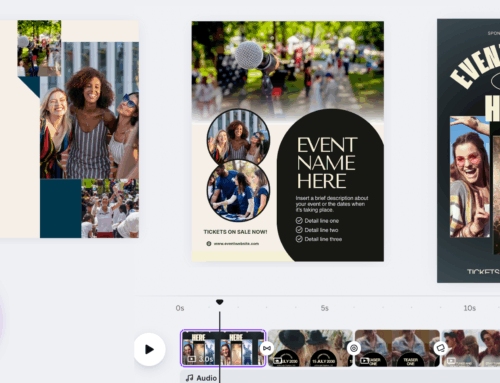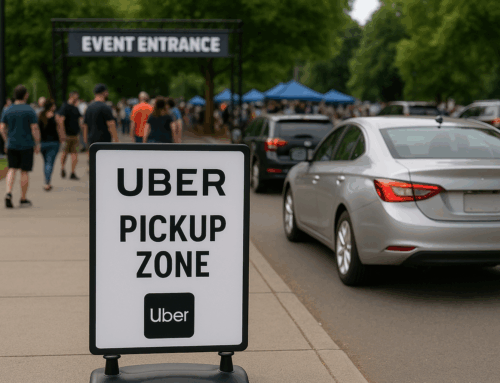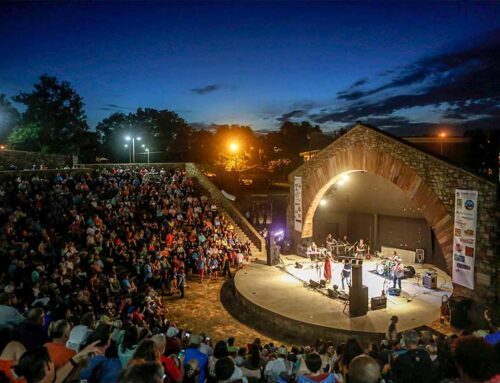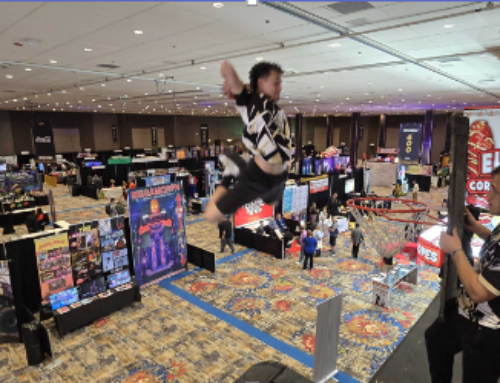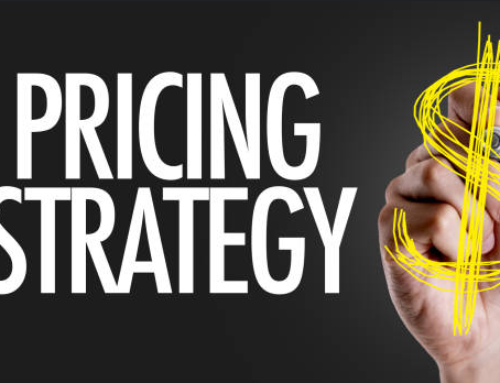The most successful festivals and events make back most, if not all, of their production budget from sponsorship sales and participating vendor fees. While nearly every festival has defined sponsorship opportunities and lower priced 10×10 fees for local vendors, many fail to capture the potential business of experiential marketers.
Experiential marketing tours, or promotional (“promo”) tours, represent one of the fastest growing segments in potential marketing sales for festivals. A recent review of global advertising agencies by AdvertisingAge found that experiential agencies grew 4% year over year, versus traditional marketing such as media, advertising and PR, which grew only 0%, 1.8%, and 2.4%, respectively. Learning how to capture this business and optimize pricing to target this unique type of event marketer can make a huge impact to an event’s bottom line.
1. Understanding the Experiential Marketing Customer
Experiential marketing tours are typically produced by experiential agencies, who are hired by larger PR firms or directly by corporate brands to execute a particular tour as part of a larger overall marketing strategy. Tours can also be produced directly by experiential divisions of advertising agencies, and some brands have begun handling their experiential efforts in-house. In contrast to larger sponsorship budgets, experiential tour budgets are designed primarily for “boots on the ground” engagement with their target customers.
As such, expensive and expansive sponsorship packages loaded with co-branding and digital marketing perks are often outside the scope – and budget – of their programs. At the same time, they have considerably more money to work with than your typical local vendor. Daily event fee budget for tours can range from under $500/day to more than $5000 per 10×10 space, depending on the size and scope of their program.
2. Simplify and Clearly Define Offerings
Deciding on the optimal asking price for experiential tours between the expensive sponsorship packages and local vendor pricing depends on many factors, but a good starting point is between $500 and $1500 per 10×10, depending on the daily attendance and demographics of a given event. Whereas with larger sponsors you are typically dealing with a senior advertising executive, when selling booth space to experiential marketers you can often be dealing with a coordinator-level or assistant-level employee of an agency, or a sub-contractor for the agency who specializes in this. This is because event fees make up a relatively small percentage of an overall promo tour budget.
These points of contact have little appetite to work out a customized relationship and have lengthy negotiations on price, as they have a defined daily budget for anywhere from a dozen days to 100+ days of “activation,” or operating days, for their programs. They are more or less “checking off a box” for a day in the schedule at an event that meets their minimal requirements. Nothing frustrates an experiential tour booker more than having to track down a sponsorship salesperson, and then getting vague package and pricing info over the phone.
These booking reps love clearly defined “10×10 foot, 10×20 foot” booth pricing within their budgets, and a list of reasonably priced options that can quickly and easily be brought back to their supervisor for review. Instead of forcing a square peg into a round hole, recognize that these types of sales are more transaction based in nature. With a little bit of brainstorming upfront to create optimal promo tour pricing, you can reap the easy money and save your energy for closing that higher-end, $50k title sponsor!
3. Showing the Event vs. Telling the Event
Festival producers love to post blurbs on their websites about how great their event is, how packed and record breaking attendance levels are year after year, how they have the perfect demographic for sponsors, and so on. While a necessary and important part of the sponsorships section (more on that shortly), event marketers are savvy to the fact that some festivals tend to exaggerate the numbers and success of years past. Due to their inability to verify festival claims, most experiential marketers take those event descriptions with a very large grain of salt, and instead look for proof of an event’s packed attendance and demographics in available event media.
Rather than telling a potential experiential marketer about the festival’s audience, show them how well your event can fill their needs. Wide-angled photos of a packed house show the event to be a success in terms of attendance. Seeing lots of faces in pictures that reflect the advertised demographic provide proof those types of people attend the event. Showing off a couple promo tour booths from previous years being mobbed by smiling attendees is digital gold for selling event space. These types of pictures allow an event booker to imagine their own setup being successful, and tells them you can deliver in terms of target consumers and on ideal booth locations to intercept the festival attendees.
If your event has produced a sizzle video about the event from a recent year, it’s even more powerful than pictures. Posting as much media content as possible on the event website – especially in the sponsorships section – significantly increases the attractiveness of an event.
4. Offer Detailed and Accurate Attendance and Demographic Information
As mentioned in the beginning of this article, experiential marketers are mainly focused on what types of “boots on the ground” interactions can be achieved at a given festival or event. As such, they need to be able to quickly understand the scope of the event in terms of the audience they will be able to reach. Total attendance is a key figure, so, offering daily attendance and weekend attendance can make an event more enticing to a marketer, especially if they only have budget to come in for part of a longer event.
In terms of demographics, be as detailed as possible. Typical demographics provided include income, gender, ethnicity, and the percentage of attendees that are local, regional, national, and international. Offering truthful and accurate demographic information is important not only to securing sales for this year’s event, but even more so for getting return business in future years. Experiential marketers will be expecting a certain demographic based on the information provided, so if the actual attendees are outside of the target consumer for the brand, your event will likely lose a return customer and gain a reputation in the industry as an event that does not deliver as promised.
It is important to understand that a given experiential agency can work with anywhere from half-dozen to over 50 brands. Stretching the truth with demographics to close one sale could lose a festival many potentially larger sales from the same company or its partners, whereas delivering on expectations could result in multiple tours being booked by the same agency in future years.
5. Communication Up Through and After the Booking
I can think of several instances where I was trying to book booth space for a promo tour, and several festivals lost out on easy sales from me simply because it was too difficult or took too long to get ahold of their sponsorships person. This can happen for several reasons. As previously discussed, experiential tours are more transaction-based. However, many festivals group experiential tour sales in with sponsorships, which are often handled directly by the festival president or CEO. While this works for title sponsors who need that top level executive contact, having to wait to hear back from the president just to book a $1000 or $2000 booth space is needlessly complicated for the booker, and at the same time may not be the best use of the president’s time.
On the other hand, some festivals lump promo tour sales in with general food and craft vendors and force the marketer to submit an entire application and wait to hear back from an unidentified point of contact to see if space is available and they are accepted into the event. This can be even more frustrating to a booker, and underestimates their value as a premium price-point vendor. Often in these cases, by the time the event producer or vendor manager connects with the experiential tour booker, they have already found and committed to another similar event that was more accessible.
A recurring theme of this article has been having important information easily available online for experiential marketers to find, and this is no exception. Many times a potential promo tour or even a sponsor is forced to make their initial inquiry via a built in submission form, a generic “sponsorships@______fest.com” email address or the general catch all voicemail for the festival. A promo tour booker may or may not bother trying the generic inquiry; they may simply move straight onto their next target event on the list for your region. If they do send an inquiry, they won’t be waiting around for a response before reaching out to the competition.
The most successful events, in terms of booth sales to experiential tours, have their pricing and direct contact info easily viewable online, and a dedicated sponsorships rep on-hand who can close these levels of sales on behalf of the event. Some of the top grossing events even have online systems allowing event marketers to view and book available booth space. One final note on communication is that after the sale, it’s very important to have someone easily available to handle any logistical needs or questions as they arise, up and through the event day. This will ensure positive feedback goes back to the agency for future business.
Conclusion
With all of the competition out there fighting for headlining sponsorship dollars, an often overlooked and potentially huge source of additional revenue for festivals and other events is selling their booth space to experiential marketing tours. Once event producers understand this category, they can tailor simplified, premium-priced booth space offerings to these customers. The best way to entice experiential tours to book is through rich multimedia, accurate and detailed attendance and demographic info, and clear and fast lines of communication every step of the way.

